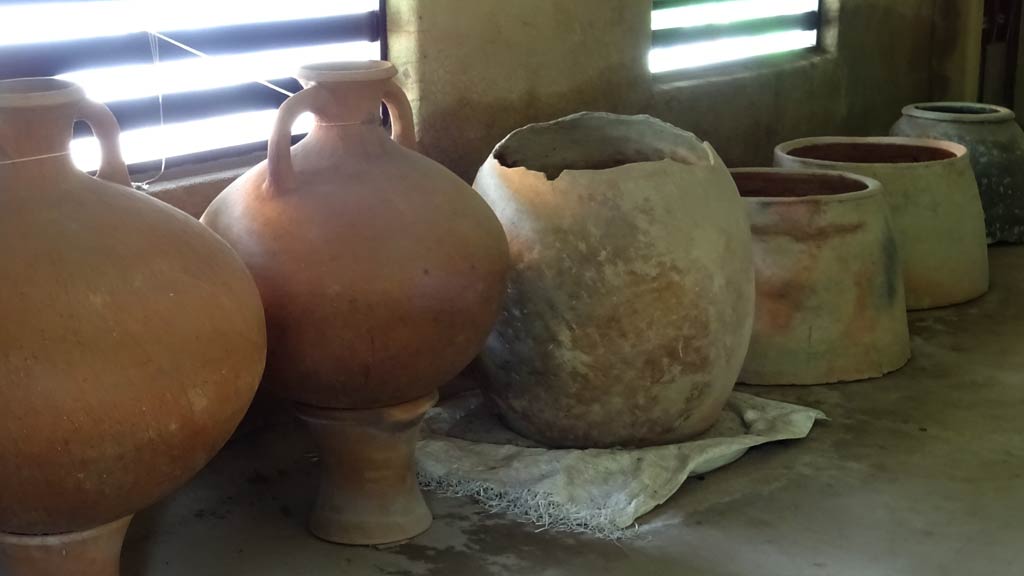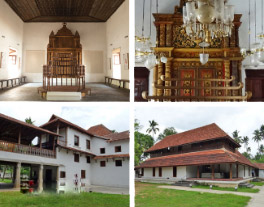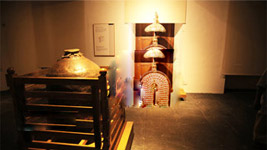Social Life in Muziris, reconstructed from Literary References

The significance of the old Tamil songs lies in the graphic pictures they have painted of the social structure that prevailed in those times, and the lifestyles of the different communities of people. The region was seen as consisting of naanilam or four geographical areas.
One, neythal or the coastal plains, which included places like Pattanam and Kodungallur, inhabited by people engaged in fishing, making salt, diving for shells and even pearls. It is believed that the pearls from this area had gained renown in the north of the country as well, during those times.
Two, marutham or the hinterlands, which were used as farmlands. A social hierarchy seems to have been in existence in this area, consisting of the owners of the lands and the workers they employed. Living off this system were other communities like the velar and the paanar who, by working as oracles and wandering minstrels, were custodians of religious rites, songs, customs and rituals.
Three, mulla or the meadows and the foothills. The meadow region supported grazing cattle. Cowherds formed the major community here and their produce included milk, curd, ghee and so on.
Four, kurinchi or the hills and the forests. The forests were inhabited by communities like vedar, kuravar, kaanavar and others. Some of the main crops were pepper, cardamom, ginger. Grains were also grown. Hunting too was a serious occupation and there is proof that hunting of elephants was encouraged because much premium was attached to ivory.
As no single community could lead a self-sufficient life, interactions for the sake of exchange of commodities was inevitable. This paved the way for the exchange market or Mattachanda where bartering would take place. Different varieties of fish and other marine products were brought from neythal to be given in exchange for paddy from marutham or dairy products from mulla or forest products from kurinchi. Old Tamil songs are replete with references to such interfaces, and it is believed that the earliest market was set up at Kottappuram in Kodungallur.
As time passed, a certain degree of sophistication emerged. Rice grains and salt became the standard items to decide the exchange value of commodities, or a commodity-based common measure of value. In fact, the price of salt and paddy was the same. Newer strata also came into being like Kurunilamannanmaar and Mudivendanmaar. The former were princes of tiny areas and the latter, crowned rulers. As cattle and grains began to be perceived as indicators of wealth, and theft became rampant, yet another category of people rose into existence – the warriors who had to guard the treasures. Many songs got written, lavishing praise on the courage and the feats of these men.
Historical References
Many works written by Westerners also point to the richness of the land that could be accessed through Muziris. According to the first-century annals of Pliny the Elder and the author of Periplus of Erythrean Sea, Muziris could be reached in 40 days’ time from the Red Sea ports in the Egyptian coast, depending entirely on the monsoon winds.
In fact, Pliny is critical of the economic losses suffered by Rome because of its overdependence on such items of luxury as the spices, silk, muslin and so on. Such was the Romans’ passion for pepper that the spice was called Yavana Priya [dear to the Romans] by the Sanskrit writers. The fact that there was extensive trade between Kerala and Rome became evident when Roman coins were unearthed in many parts of Kerala.
Claudius Ptolemy, a Greco-Egyptian geographer, living in 2nd century CE, in Alexandria, Egypt, then part of the Roman Empire, mentions “muziris em.” which refers to Muziris ‘Emporium’, one of the wealthiest and most famous ports of India.
The Tabula Peutingeriana (also known as the Peutingerian Tables), an illustrated ancient Roman road map showing the layout of the road network of the Roman Empire, indicates the exact location of a "Temple to Augustus" at Muziris, thus pointing to a dynamic trade relationship between Rome and India. What is even more fascinating about the Tabula is that it incidentally points to the fauna of the region too. Muziris gets included along with a phrase: “in this place elephants are born”.
Another significant document is a Greek one, the Papyrus Vindobonesis, also known as the “Muziris Papyrus” which makes interesting allusions to the materials that were exported from Muziris to Rome. The cargo that a ship named Hermapollon contained included pepper, malabathron (an aromatic plant leaf and the ointment made from it), ivory and schidai (ivory of lesser value or fragments of ivory).
Historical Evidences
It is interesting to note that even when Muchiri is praised as being the best of the ports on the western coast of the Indian peninsula, nothing is known about the other ports except their names. At least three other names are mentioned – Thondi, Manthai and Panthar – as having existed in the same time period. Among them, Thondi is believed to have been located to the south of Kozhikode. During the reign of the Chera dynasty, the port witnessed active trade between the region and far-off places like Rome and the Arab countries. It fell into ruin when the Cheras lost power. Today, Thondi is known as Kadalundi, and is more famous as a port of call for migratory birds! Panthar was situated to the north of Kozhikode, and is the Panthalayini of today. Concrete historical evidence has been found only on Muchiri or Muziris.

